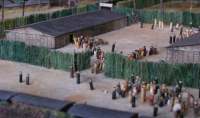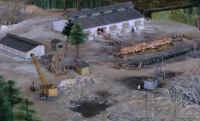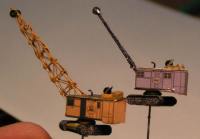During the Holocaust several death camps were established by the Nazis in Poland, one of which was Treblinka. Virtually nothing remained after it was obliterated by the Nazis and only sketchy information could be obtained regarding the camp’s features.
The model maker consequently had to collate all available snippets of information about Treblinka’s features which then culminated in a substantial research report. On this information a revised approach was proposed and based on this, the model was built.
Although a certain level of detail was attempted, it must be stressed that an exact picture will never be able to emerge of what the death camp actually looked like and the model simply tries to convey the size and approximate layout. A certain amount of artistic freedom was therefore applied.
See also the CASE STUDY Case Study on this site as well as the Laponder Model on the ARC website.
CONCEPT: Model of historical death camp site, Treblinka. Responsible for in-depth research with resulting research report. The research for the layout of the camp was done with the aid of overlays generated on computer etc.
CLIENT: First model for Cape Town Holocaust Centre, second model on display at the ‘Gisozi Genocide Memorial’ in Kigali, Rwanda. Note: The model maker was initially commissioned in 1998 to reconstruct a Treblinka model at the Cape Town Holocaust Centre. Due to his research on that model he was commissioned to do more in-depth research (which including visiting the site in Poland) and construct the up-to date Rwanda model as it appears on the ARC website.
MEDIA: Mixed: Wood, Styrene, ABS plastic, cardboard, paper etc.
SIZE: 150cm x 130cm
SCALE: 1:400
RESEARCHED AND CREATED: First model - 1999, second model 2004.
 |
| Treblinka Deportation Yard |
 |
| Treblinka Fence |
 |
| Treblinka Extermination Area |
 |
| Treblinka Excavators |
© Peter Laponder 2006